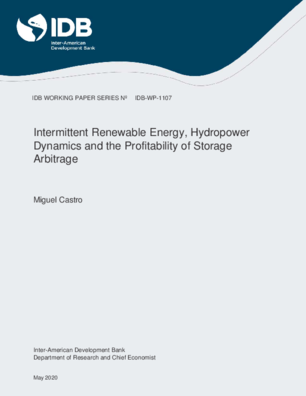Intermittent Renewable Energy, Hydropower Dynamics and the Profitability of Storage Arbitrage
Date
May 2020
This paper estimates the impact of solar and wind power intermittency on wholesale prices, arbitrage opportunities and the profitability of storage. First, I use the short term randomness of wind and solar generation to estimate the hourly reductions in wholesale electricity market prices (merit-order effect) in Mexico. Second, since hydropower is already acting as battery storage by smoothing the hourly intermittency of wind and solar, I use lags to control for the reallocation, to estimate the appropriate dynamic merit-order effect and to project future wholesale prices for larger renewables capacities. Third, I use dynamic optimization to assess the profitability of energy arbitrage for a marginal storer. Storage profits based on market average wholesale prices for 2019 (10.6 GW of wind and solar) are lower than the levelized cost of batteries (LCOE). For the 2029 planned wind and solar capacities (30.9 GW), storage arbitrage profits would be within the range of its projected declining LCOE for a 4-hour battery. Nevertheless, for nodes with large price variances and not fully transmission congested, arbitrage storage would be within the range of the LCOE sooner by 2025 (25.4 GW). Pumped-storage hydro arbitrages power at a lower rate which make its profits lower than those of the batteries. The full value of storage can be larger if we consider other services (e.g. frequency regulation). Similar lessons will apply to grids/countries with increasing shares of renewables and non-dominant hydropower.




